Director: Norman Law Man
Co-director: Siao Lung
Producer: Ng See Yuen
Cast: Hwang Jang Lee, Mars, Lee Chun Hwa, Tien Niu, Tsang Choh Lam, Chu Chi Ling, Linda Lin, Sek Kin, Charlie Chan, Yiu Lam, Chiang Kam, To Siu Ming
Running Time: 98 min.
By Paul Bramhall
Producer Ng See Yuen and Seasonal Films knew they were onto a good thing with the double-whammy of Snake in the Eagles Shadow and Drunken Master, the 1978 productions that effectively launched Jackie Chan into the stratosphere, and made Korean super-kicker Hwang Jang Lee a household name. By the time it was 1980, Chan was at Golden Harvest attempting to break into Hollywood with The Big Brawl, as well as working on his sophomore feature in the director’s chair with Young Master. See Yuen was left scrambling to recreate the success of his collaborations with Chan, and repeatedly looked to the same formula but with a different lead.
In 1979 Dance of the Drunken Mantis brought back most of the cast and crew (including Yuen Woo-Ping as director and Hwang Jang Lee as the villain), with the Yuen Clan’s Yuen Shun-Yi as the lead, and 1980 kicked off with Two Fists Against the Law, which brought in Alan Chui and Chik Ngai-hung to face off against, you guessed it, Hwang Jang Lee. While both productions had moderate success, they also serve as early examples that prove regardless of your leads screen fighting talent, if you’re going to headline a movie you also need an equal amount of screen presence and charisma. Undeterred though, the latter half of 1980 saw the release of Lackey and the Lady Tiger, another attempt to stick to the formula that was perceived as the winning one from a couple of years prior.
The irony of Lackey and the Lady Tiger is that this time the Jackie Chan replacement is the man who’d become one of Chan’s most famous stunt doubles – Mars. Taking on a lead role for the first time (and arguably last, although he’d play a supporting character with significant screen time in Naughty Boys from 1986), Mars is one of those likeable guys who’s always up for performing a crazy stunt. Just a year prior he’d become a part of Jackie Chan’s Stuntman Association, and he’d go onto play supporting roles as well as stunt doubling in many of Chan’s most famous work from the 80’s (notably, he performs the famous alley way bicycle lift in Project A).
Here he plays a lowly kitchen hand who loves to learn kung fu, if only he had the money to do so. Thankfully he’s a resourceful guy, so when making food deliveries to a local kung fu school (run by Charlie Chan), he tends to stick around longer than needed to observe what’s being taught. He also becomes acquainted with the fish delivery boy (who’s actually a girl, played by Tien Niu, the Lady Tiger the title refers to) of the restaurant he works at, who turns out to know both snake fist, and what can best be described as fishing kung fu. Her skills comes from her grandfather, played by the legendary Sek Kin (the villain from Enter the Dragon), who’s developed a unique style of fishing which has him use a pole to strike the fish when they’re just under the surface. A humane death, and no fussing around with lines or hooks! Needless to say, this is also a not so subtle indicator that he’s a kung fu master.
So, what exactly is the plot? Damned if I know. I’ll be honest, in old-school kung fu movie’s plot isn’t that much of a priority. Give me a bare bones revenge tale that has the slightest thread of coherency, throw a bunch of top level fight scenes in there, and you won’t find me complaining about a lack of characterisation or how many plot holes there were along the way. However Lackey and the Lady Tiger struggles even with this. It’s a well-known fact that many of these old-school kung fu flicks were made up as they went along, with the main priority being the fights, however never has it been more blatant than here. Apart from Mars wanting to learn kung fu, and his subsequent attempts to do so, there doesn’t seem to be a whole lot going on. A villain would be nice at least.
Just short of the hour mark, co-directors Siao Lung (The South Shaolin Master) and Norman Law Man (A Hearty Response) seems to realise this, so suddenly Hwang Jang Lee (who else!?) randomly shows up in jail being visited by his sister. He’s getting out in 3 months, and wants revenge on Sek Kin for some reason (don’t expect to have too much more clarity on why by the time the end titles roll). Before that though, it honestly feels like Lung and Law Man’s approach was something along the lines of, “We’ve got Mars and Hwang Jang Lee in the same movie, so let’s just keep on filming whatever inconsequential crap comes to mind while we figure out a way to have them fight.”
Onscreen, this amounts to basically an hour of unfunny comedy, fights which for the most part are played for laughs, and plotless meandering. Fish get thrown into people’s faces, firecrackers get set off in people’s eyes (which I found to be kind of cruel, but hey, that’s just me!), and at its most infuriating Tien Niu breaks into an ear bleeding rendition of Rock Around the Clock, set to the context of a training scene which has Mars surrounded by suspended bricks tied to various appendages. It’s a struggle to get through, and time gets warped to feel much longer than it actually is.
Matters aren’t helped by Mars himself. Like the Xing Yu’s and Philip Ng’s of today’s kung fu movies, supporting roles are where he really shines, with leading man status proving to be a bridge too far. It may of course be the fault of the character he’s being asked to play, but his permanently cheerful demeanour means a grin never seems to be far from his face, making it almost impossible to feel that anything is really at stake in the fights he partakes in (yes, even when he’s getting beaten to a pulp, he still ends up showing his pearly whites!). There’s also a lack of focus on exactly which style we should be concentrating on – in the beginning he learns snake fist, which becomes more and more inconsequential, he attempts to copy the pole fighting from the kung fu school, then also learns pole fighting from Sek Kin, and ultimately ends up copying a cat (via repeatedly throwing one into the air to observe how it lands, poor cat!).
Thankfully the last third has Hwang Jang Lee released from jail, sporting what appears to be his cream coloured threads from Drunken Master (I initially thought a shot of him walking was recycled!). Any opportunity to see the boot master in action is usually a welcome one, and here the action choreography is handled by Chan Siu-Pang. While his name may not be instantly recognizable, Siu-Pang has an impressive body of work as a fight choreographer, and at this point in his filmography had already racked up 20 years of experience. He worked extensively with Cliff Lok, choreographing the likes of Tiger’s Claw, Thou Shall Not Kill…But Once and Duel of the 7 Tigers, and also Joseph Kuo, handling the action on The Blazing Temple, The 18 Bronzemen, and The Shaolin Kids to name a few.
Here Jang Lee is given a fighting style that represents a “form of judo that uses their opponent’s strength against them.” As expected, this results in him being able to throw his opponents around with ease, however the lack of focus results in even this fighting style being diluted, as in the short time he’s onscreen he also uses a pole (fresh from using one in Hell’s Windstaff the year prior), as well of course as his famous kicks. The closing reels of Lackey and the Lady Tiger consist of Jang Lee taking on Linda Lin Yang (who plays his sister trying to set him on the straight and narrow), before seguing into a fight against Sek Kin, then Mars, before eventually becoming a 2 vs 1 as Mars teams up with Tien Niu to take him out.
While the fights serve their purpose, they lack any kind of distinctive “wow!” moment. Jang Lee’s ferocious kicks are kept in check just enough to miss them, and his famous 3-blows flying kick feels carbon copied from the one he performs in Drunken Master (probably because he’s wearing the same clothes). For the 2nd time in 3 years he has to suffer defeat thanks to a ridiculous cat based style of kung fu, which Mars cheerily refers to as his “anti-judo power cat’s paw kung fu” (I’m serious). Lackey and the Lady Tiger was made in Jang Lee’s busiest year, clocking up 8 appearances in 1980, so perhaps he was tired of knowing he can kick everyone’s ass but still have to end up defeated. Indeed tired is the best way to describe Lackey and the Lady Tiger, which feels like a movie clinging onto the previous decade, when the reality was most audiences had already moved on.
Paul Bramhall’s Rating: 4.5/10

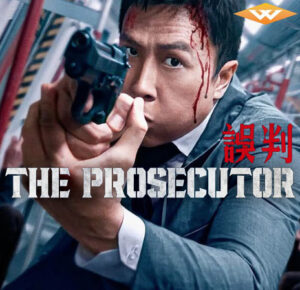

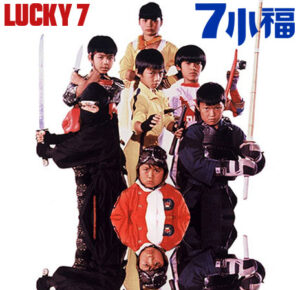

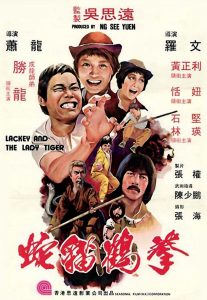






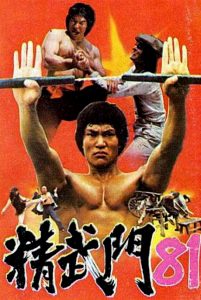



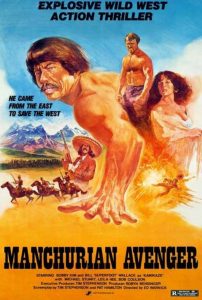

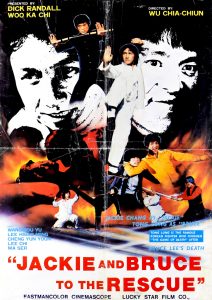
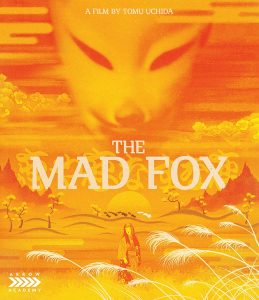




Be the 1st to Comment